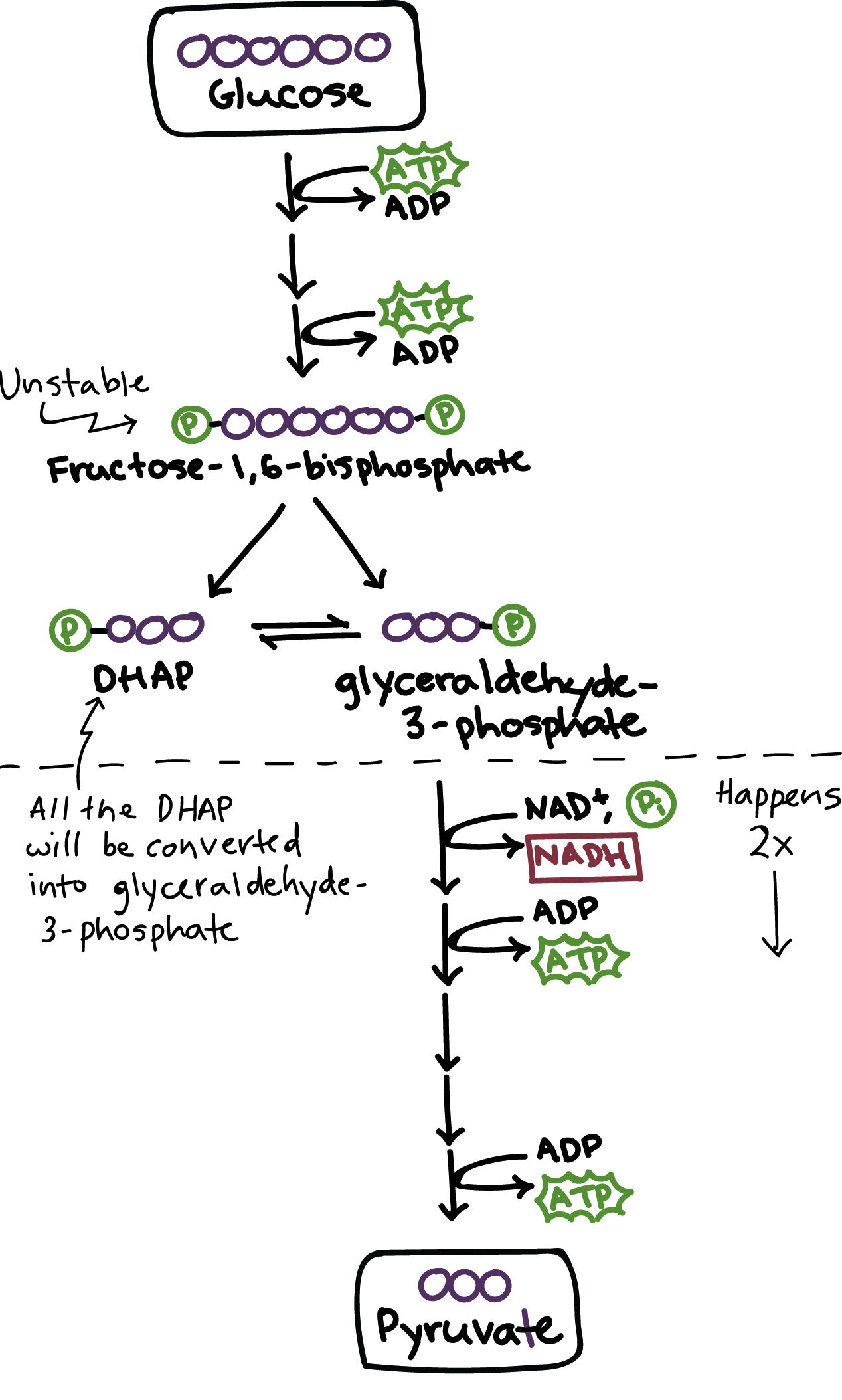Click again to see term. Memorize flashcards and build a practice test to quiz yourself before your exam.

Glycolysis Biology For Majors I
Glycolysis is the lysing or cutting of glucose to release energy.
. The series of steps where glucose is broken down to release energy begins with a metabolic pathway called glycolysis. It converts one glucose molecule to two molecules of pyruvate and carbon dioxide B. It requires ATP and NADH D.
The formation of glucose de novo from other molecules d. The bulk of ATP molecules are produced during which phase of cellular respiration. Produces two NADH moleculesd.
Breakdown of glucose to two molecules of pyruvate b. The Summation Of All The Chemical Reactions In The Body C. Breakdown of glucose to two molecules of pyruvate GL 5 Energy is released and from BIO 1111 at Columbus State Community College.
In glycolysis glucose is broken down into two pyruvate molecules each with three carbons. Glycolysis occurs in the mitochondria. Click to see full answer Also question is what is the breakdown of glucose called.
Glycolysis produces 30 ATP from each molecule of glucose. The yeast cell will produce ATP through fermentation generating carbon dioxide CO2 and. It represents the first stage in the chemical oxidation of glucose by a cell.
Metabolic Pathway 1. - Glycolysis converts one molecule of glucose to two molecules of pyruvate. Which of the following best describes what will result when a glucose-fed yeast cell is placed in an anaerobic environment.
Glycolysis the breakdown of glucose to two molecules of pyruvate is an example of a reaction that is _____ asked Sep 24 2015 in Biology Microbiology by Webster A. GlycolysisNoteGlycolysis or the splitting of sugar splits a six-carbon glucose into two three-carbon pyruvate moleculesIt is called glycolosis. Start studying the Chapter 9 Practice-7 flashcards containing study terms like Substrate-level phosphorylation occurs _____.
Requires the input of two ATP moleculesc. These molecules then undergo a three step process that removes one carbon each produces NADH and creates acetyl-CoA which brings the remaining two carbons per pyruvate into the citric acid cycle. Acetyl-CoA Enters This Cycle Which Removes.
Is the breakdown of glucose to two pyruvate moleculesb. Glycolysis can occur with or without oxygen. The six carbon sugar glucose is cut in half and converted into two three carbon sugars called pyruvate.
4 Breakdown of glucose to two molecules of pyruvate GL 5 Energy is released and from BIO 1111 at Columbus State Community College. Glykys sweet lysis splitting also called glycolytic pathway or Embden-Meyerhof-Parnas EMP pathway is the sequence of reactions that metabolises one molecule of glucose to two molecules of pyruvate with the concomitant net production of two molecules of ATP. The second law of thermodynamics states that the entropy or disorder in a system constantly increases.
In glycolysis glucose a six carbon sugar is split into two molecules of the three-carbon sugar pyruvate. - A nucleic acid molecule is broken down into nucleotide subunits. It consumes 2 ATPs to breakdown 1 glucose G.
The Formation Of Glucose De Novo from Other Molecules D. This multi-step process yields two molecules of ATP free energy containing molecule two molecules of pyruvate and two high energy electron carrying molecules of NADH. 2 Glycolysis is the breakdown of glucose into two pyruvate molecules 3 from BIOL 1110 at Motlow State Community College.
A in glycolysis B in the citric acid cycle C in both glycolysis and the citric acid cycle D during oxidative phosphorylation The molecule that functions as the reducing agent. Which of the below best describes the electron transport chain and oxidative phosphorylation. Anabolic catabolic aerobic synthetic.
The breakdown of glucose to pyruvate by a cell is an example of what type of reaction. Breakdown Of Glucose To Two Molecules Of Pyruvate B. Glucose molecules are split into two pyruvate molecules resulting in a net production of two ATP molecules and two NADH molecules.
Acetyl-CoA enters this cycle which removes the electrons and hydrogen atoms from carbon.
2 27 Glycolysis Biology Libretexts

Glycolysis Introduction Pathway Diagram Summary Medical School Essentials Study Biology Medical School Studying

Glycolysis Cellular Respiration Biology Article Khan Academy
0 Comments